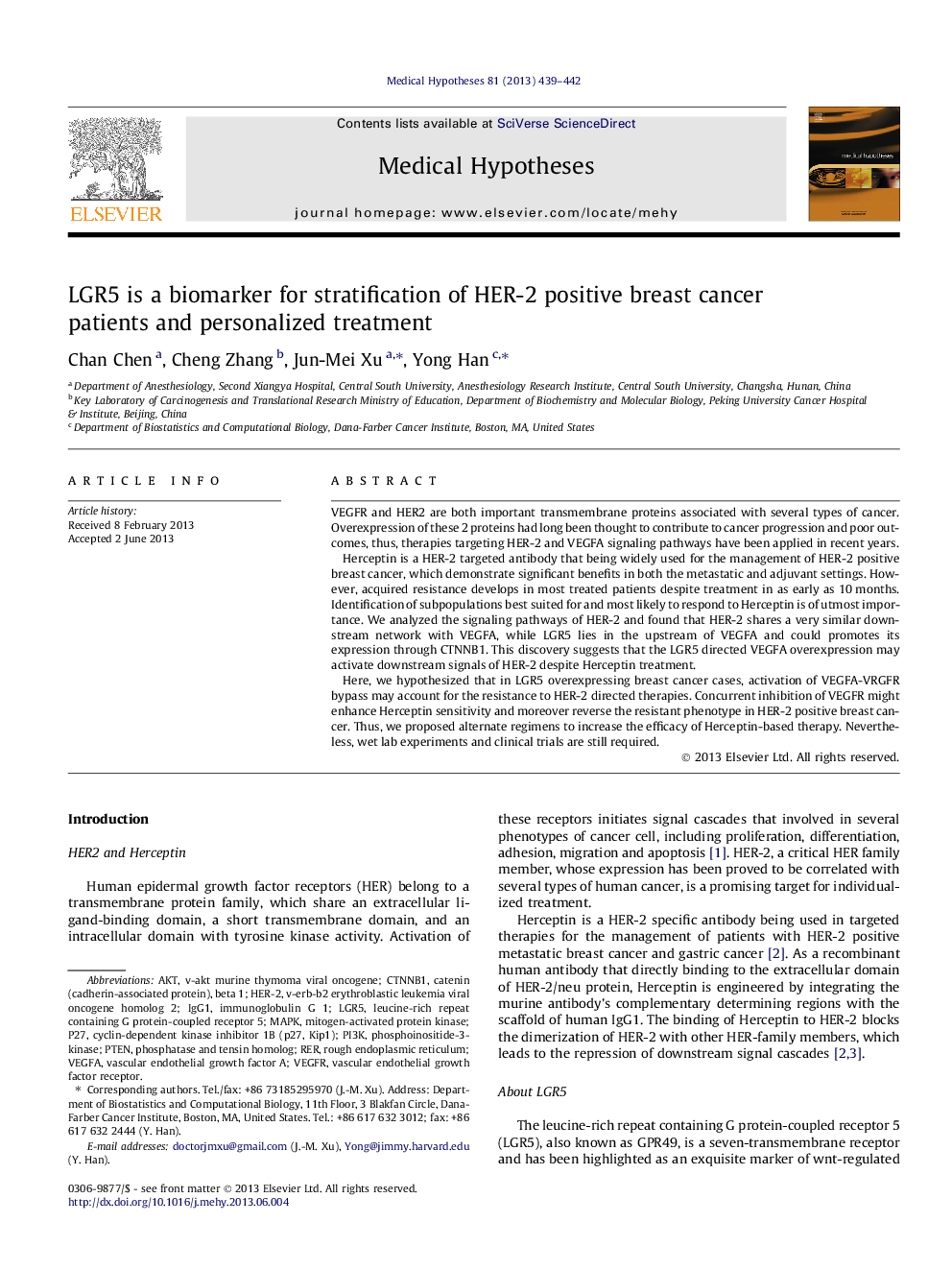| Article ID | Journal | Published Year | Pages | File Type |
|---|---|---|---|---|
| 5812257 | Medical Hypotheses | 2013 | 4 Pages |
VEGFR and HER2 are both important transmembrane proteins associated with several types of cancer. Overexpression of these 2 proteins had long been thought to contribute to cancer progression and poor outcomes, thus, therapies targeting HER-2 and VEGFA signaling pathways have been applied in recent years.Herceptin is a HER-2 targeted antibody that being widely used for the management of HER-2 positive breast cancer, which demonstrate significant benefits in both the metastatic and adjuvant settings. However, acquired resistance develops in most treated patients despite treatment in as early as 10Â months. Identification of subpopulations best suited for and most likely to respond to Herceptin is of utmost importance. We analyzed the signaling pathways of HER-2 and found that HER-2 shares a very similar downstream network with VEGFA, while LGR5 lies in the upstream of VEGFA and could promotes its expression through CTNNB1. This discovery suggests that the LGR5 directed VEGFA overexpression may activate downstream signals of HER-2 despite Herceptin treatment.Here, we hypothesized that in LGR5 overexpressing breast cancer cases, activation of VEGFA-VRGFR bypass may account for the resistance to HER-2 directed therapies. Concurrent inhibition of VEGFR might enhance Herceptin sensitivity and moreover reverse the resistant phenotype in HER-2 positive breast cancer. Thus, we proposed alternate regimens to increase the efficacy of Herceptin-based therapy. Nevertheless, wet lab experiments and clinical trials are still required.
